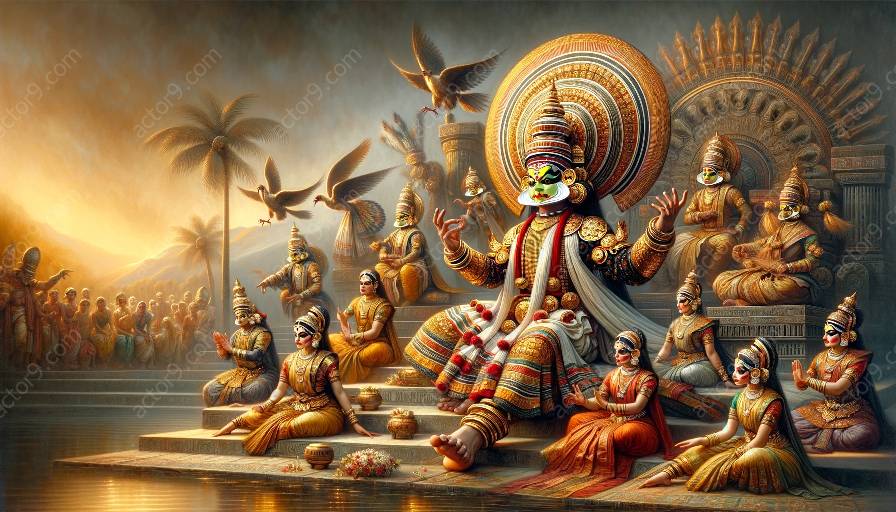Kathakali acting techniques are deeply rooted in tradition and history, but the art form continues to evolve with new innovations and future directions. As technology advances and cultural exchange continues, the anticipated changes in Kathakali acting techniques are noteworthy.
1. Fusion with Modern Acting Techniques
In recent years, there has been a growing trend towards integrating Kathakali acting techniques with modern acting methodologies. This fusion has the potential to create a new dimension in Kathakali performances, as it allows for the exploration of diverse emotions and characters in a more relatable manner.
The integration of Stanislavski's method, Meisner technique, or Laban Movement Analysis with Kathakali acting techniques offers actors a broader range of tools to express themselves and connect with contemporary audiences while retaining the essence of the traditional art form.
2. Incorporation of Technology
Another anticipated direction for Kathakali acting techniques is the incorporation of technology. With the use of digital media, virtual reality, and augmented reality, performers can create immersive experiences and expand the boundaries of traditional stage performances.
Technology can also be utilized in training and education, providing aspiring Kathakali artists with interactive learning tools and access to instructional materials from master performers around the world.
3. Exploration of Non-Traditional Themes
Future innovations in Kathakali acting techniques may involve the exploration of non-traditional themes and stories. While the classic repertoire of Kathakali has been cherished for centuries, there is a growing interest in adapting the art form to address contemporary social, political, and environmental issues.
This shift in thematic exploration requires actors to adapt their techniques to portray complex and multifaceted characters, contributing to the evolution of the art form while retaining its cultural integrity.
4. Interdisciplinary Collaborations
An interesting direction in the future of Kathakali acting techniques is the potential for interdisciplinary collaborations. By partnering with professionals from other artistic disciplines such as music, dance, theater, and visual arts, Kathakali actors can explore new creative possibilities and push the boundaries of traditional performances.
These collaborations can lead to the development of innovative storytelling techniques, unique choreography, and experimental staging, enriching the overall artistic experience for both performers and audiences.
5. Evolution of Training Methods
Anticipated advancements in Kathakali acting techniques also extend to the evolution of training methods. With an increased focus on accessibility and inclusivity, traditional training methodologies are being adapted to accommodate diverse learning styles and accommodate global participation.
Furthermore, the integration of pedagogical advancements and scientific research in performing arts education can enhance the efficiency and effectiveness of training programs, nurturing the next generation of Kathakali performers.
In conclusion, the future directions and innovations anticipated in Kathakali acting techniques are reflective of the dynamic nature of this traditional Indian art form. By embracing the fusion with modern acting techniques, incorporating technology, exploring non-traditional themes, engaging in interdisciplinary collaborations, and evolving training methods, Kathakali acting techniques are poised to continue captivating audiences while adapting to the changing cultural landscape of the twenty-first century.













































